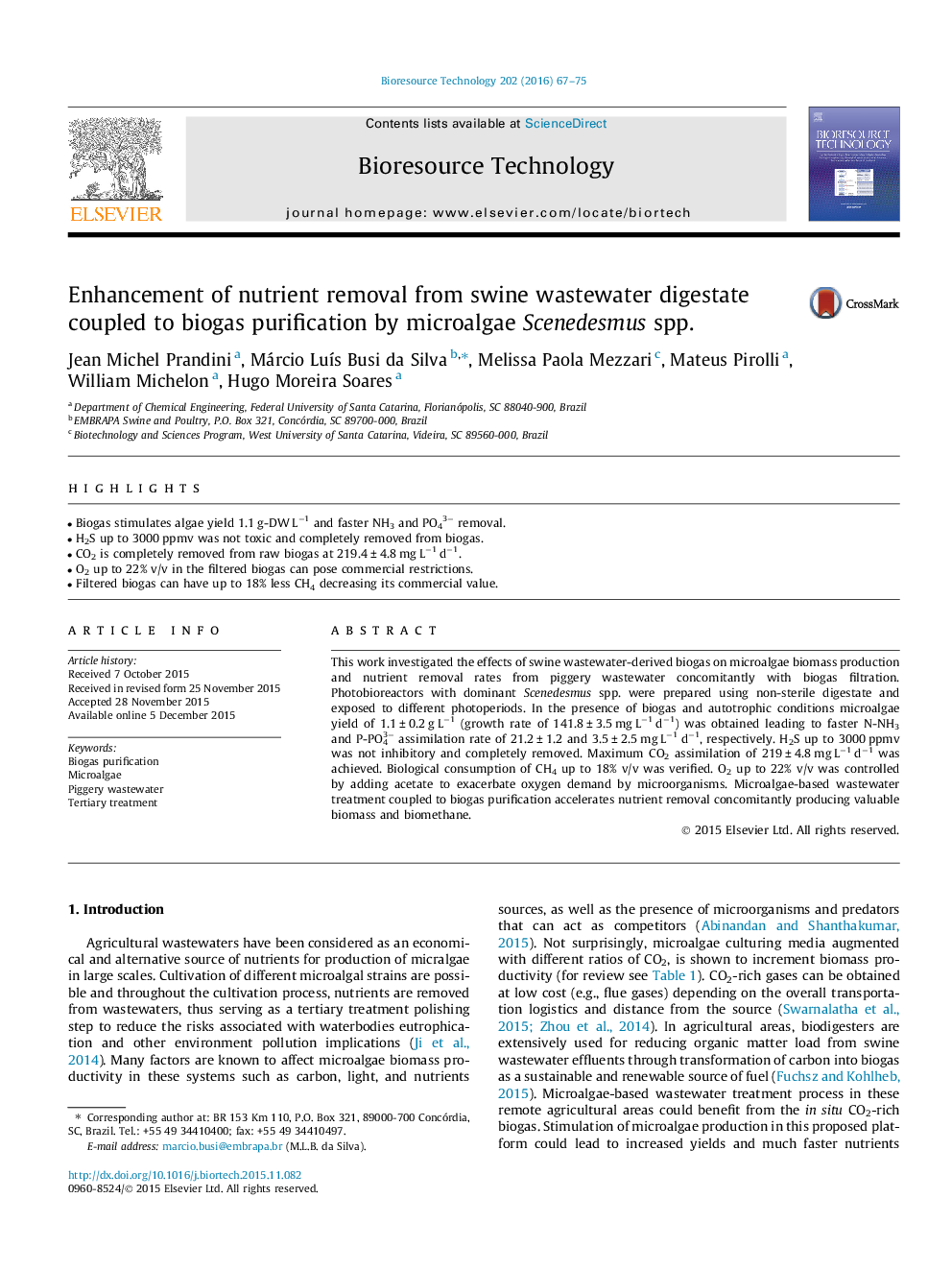| Article ID | Journal | Published Year | Pages | File Type |
|---|---|---|---|---|
| 679295 | Bioresource Technology | 2016 | 9 Pages |
•Biogas stimulates algae yield 1.1 g-DW L−1 and faster NH3 and PO43− removal.•H2S up to 3000 ppmv was not toxic and completely removed from biogas.•CO2 is completely removed from raw biogas at 219.4 ± 4.8 mg L−1 d−1.•O2 up to 22% v/v in the filtered biogas can pose commercial restrictions.•Filtered biogas can have up to 18% less CH4 decreasing its commercial value.
This work investigated the effects of swine wastewater-derived biogas on microalgae biomass production and nutrient removal rates from piggery wastewater concomitantly with biogas filtration. Photobioreactors with dominant Scenedesmus spp. were prepared using non-sterile digestate and exposed to different photoperiods. In the presence of biogas and autotrophic conditions microalgae yield of 1.1 ± 0.2 g L−1 (growth rate of 141.8 ± 3.5 mg L−1 d−1) was obtained leading to faster N-NH3 and P-PO43− assimilation rate of 21.2 ± 1.2 and 3.5 ± 2.5 mg L−1 d−1, respectively. H2S up to 3000 ppmv was not inhibitory and completely removed. Maximum CO2 assimilation of 219 ± 4.8 mg L−1 d−1 was achieved. Biological consumption of CH4 up to 18% v/v was verified. O2 up to 22% v/v was controlled by adding acetate to exacerbate oxygen demand by microorganisms. Microalgae-based wastewater treatment coupled to biogas purification accelerates nutrient removal concomitantly producing valuable biomass and biomethane.
